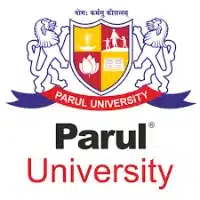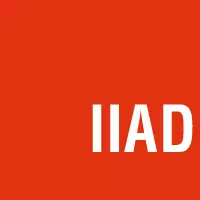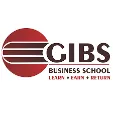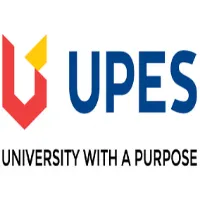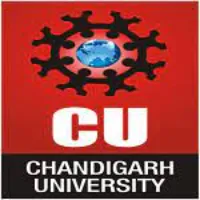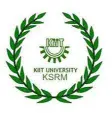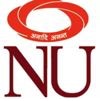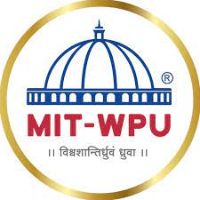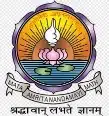Latest Applications Open 2024:
CG PET 2024 Syllabus will be available now. The CG PET is referred to as the Chhattisgarh Pre Engineering Test, which is approached by the Chhattisgarh Professional Examination Board and there is a large number of candidates that may appear for this examination to get admission to the various professional government colleges and institutes of the Chhattisgarh State.
The candidates can attend the CG PET examination after completing the application form online. The candidates should be eligible to take the examination of CG PET and before filling the application form, they have to check their eligibility criteria.
There is engineering, dairy technology, and agriculture technology courses are provided through CG colleges and institutes. Through this content, the applicants will be able to know the complete information about CG PET which includes the CG PET Syllabus, exam pattern, etc.
CG PET 2024 Syllabus
The CG PET Syllabus is prepared by the Directorate of Technical Education of Chhattisgarh state, and all of the participating candidates have to prefer the syllabus for better preparation for the examination. Candidates have to read and complete the syllabus topics and sub-topics carefully to prepare the best for
Candidates have to read and complete the syllabus topics and sub-topics carefully to prepare the best for the exam. Those candidates are getting admission to B.Tech Courses; they must prefer the syllabus and all subtopics to score good marks in the examination.
Latest Applications For Various UG & PG Courses Open 2024
-
- Parul University | Admissions Open for All Courses 2024. Apply Now
- UPES Dehradun | Admissions Open for All Courses 2024. Apply Now
- Chandigarh University | Admissions Open for All Courses 2024. Apply Now
- LPU 2024 | Admissions Open for All Courses 2024. Apply Now
- IIAD, Delhi | Admissions Open for All Courses 2024. Apply Now
- GIBS, Bangalore | PGDM Applications Open. Package upto 15.5 LPA. Apply Now
- GNIOT, Greater Noida | Admissions Open for All Courses 2023. Apply Now
- The Design Village | Admissions Open for All Courses 2024. Apply Now
- IMS Ghaziabad UC Campus | Admissions Open for All Courses 2024. Apply Now
- KIIT School of Management | Admissions Open for All Courses 2024. Apply Now
- KSRM | Admissions Open for All Courses 2024. Apply Now
- Jaipuria Institute of Management | Admissions Open for All Courses 2024. Apply Now
- NIIT | Admissions Open for All Courses 2024. Apply Now
- MITWPU | Admissions Open for All Courses 2024. Apply Now
- Amrita B.Tech | Admissions Open for All Courses 2024. Apply Now
- KL University | Admissions Open for All Courses 2024. Apply Now
- Alliance MBA | Admissions Open for All Courses 2024. Apply Now
- Alliance UG | Admissions Open for All Courses 2024. Apply Now
CG PET Syllabus Details
The CG PET syllabus is given below for candidates
Physics Syllabus
UNIT – 1 Measurement:
- Units and dimensions
- Fundamental and derived units
- Dimensional analysis
- I. Units
UNIT – 2 Kinematics:
- Linear motion in one and two-dimensions
- Cases of uniform velocity and uniform acceleration
- The general relation between position and velocity
- Uniform circulation motion
UNIT – 3 Force and laws of Motion:
- Force and inertia
- Newton”s law of motion
- Conservation of momentum and energy Static and Kinetic Friction
- Uniform Circular motion
UNIT – 4 Work Energy and Power:
- Work was done by force
- Energy
- Power
- Elastic collisions
- Potential energy
- Gravitational potential energy and its angular conversion to kinetic energy
- The potential energy of a spring
UNIT – 5 Rotational Motion And Moment of Interior
- Rigid body rotation
- Couple
- Torque
- Angular momentum conservation of its momentum
- Moment of inertia
- Theorems of the parallel and perpendicular axis (Moment of inertia of uniform ring, disc thin rod and cylinder only)
UNIT – 6 Gravitation:
- Acceleration due to gravity and its variation
- The universal law of gravitation
- Motion of satellites
- Escape velocity
- Synchronous satellite and polar satellite
UNIT – 7 Properties of Solid and Fluids:
- Elasticity
- Hook”s law
- Young”s modulus
- Shear and bulk modulus
- Surface energy and surface tension
- Fluid pressure
- Atmospheric pressure
- Viscosity of fluids
- Kinetic theory of gases
- Gas laws
- Kinetic energy and temperature
UNIT – 8 Heat and Thermodynamics:
- Heat
- Temperature
- Thermometers
- Specific heat at constant volume and constant pressure
- The mechanical equivalent of heat isothermal and adiabatic processes
- Heat conduction in one dimension
- Convection and radiation
- Stefan”Slaw and Newton”s law of cooling
- Zeroth
- The first and Second law of Thermodynamics
UNIT – 9 Oscillation
- Periodic motion
- Simple harmonic motion
- Oscillations in spring
- Laws of the simple pendulum
UNIT – 10 Waves
- Transverse and longitudinal wave motion
- Speed of sound
- Principle of superposition
- Progressive and stationary waves
- Beats and Doppler effect
UNIT – 11 Light:
- Wave nature of light
- Interference,
- Young”s double-slit experiment
- The velocity of light and Doppler” ‘s effect in light
- Reflection
- Refraction
- Total internal reflection
- Curved mirrors
- Lenses
- Mirror and lens formulae
- Dispersion in prism
- Absorption and emission spectra
- Optical instruments
- The human eye
- Defects of vision
- Magnification and resolving power of telescope and microscope
UNIT – 12 Mangentism:
- Bar magnet
- Lines of force
- Torque on a bar magnet due to magnetic field
- Earth”s magnetic field
- Tangent galvanometer
- Vibration magnetometer
- Paramagnetic
- Di magnetic and ferromagnetic substances
UNIT – 13 Electrostatics:
- Coulomb”s law of electrostatics
- Dielectric constant
- Electric field and potential due to a point charge
- Dipole
- Dipole field
- Guess”s law in simple geometric
- Electrostatic potential
- Capacitance
- Parallel plate and spherical capacitors
- Capacitors in series and parallel
- The energy of a capacitor
UNIT – 14 Current Electricity:
- Electric current, Ohm”s law
- Kirchoff” slaws
- Resistances in series and parallel
- Temperature dependence of resistance
- Wheat stone bridge and potentiometer
- Measurement of voltages and currents
UNIT – 15 Effect of Electric Current:
- Magnetic thermal and chemical effect of current
- Electric power heating effects of currents
- Chemical effects and law of electrolysis
- Thermoelectricity
- Biot-Savart law
- Magnetic fields due to a straight wire
- Circular loop and solenoid
- Force on a moving charge in a magnetic field (Lorentz force)
- The magnetic moment of a current loop
- Effect of a uniform magnetic field of a current loop
- Forces between two currents
- Moving galvanometer
- Ammeter and voltmeter
UNIT – 16 Electromagnetic Induction and Alternating Current:
- Magnetic flux
- Electromagnetic induction induced by Faraday”s law
- Lenz”s law
- Self and mutual inductance
- Alternating currents impedance and reactance growth and decay of current in L-R circuit
- Elementary idea of dynamo and transformer
UNIT – 17 Electrion, Photon, and Radioactivity:
- ‘e” and ‘e/m” for an electron
- Photon
- Einstein”s photoelectric equation
- Photocells
- Bohr model of the atom
- Hydrogen spectrum
- Composition of nucleus
- Atomic masses and isotopes
- Radioactivity
- Laws of radioactive decay
- Decay constant
- Half-life and mean-life
- Mass-energy relation
- Fission
- X-Ray: properties and uses
UNIT – 18 Semicondutor:
- Elementary ideas of conductor
- Semiconductor and insulator
- Intrinsic and extrinsic semiconductors
- Diode
- Transistor
- Oscillator
- Digital circuit and logic gates
Chemistry (Physical Chemistry)
UNIT – 1 Atomic Structure
- Constitution of nucleus
- Bohr”s atom model
- Quantum numbers Aufbau principle electronic configuration of elements (upto-Kr)
- De-Broglie relation
- Shapes of orbital
UNIT – 2 Chemical Bond
- Electrovalent covalent and covalent bonds
- Hybridization (sp)
- Hydrogen bond
- Shapes of molecules (VSEPR theory)
- Bond polarity resonance
- Elements of VBT
UNIT – 3 Solutions
- Modes of expressing concentrations of solutions
- Types of solutions
- Raoult’s law of colligative properties
- Non-ideal solution
- Abnormal molecular weights
UNIT – 4 Solid State
- Crystal lattices
- Unit cells
- Structure of ionic compounds close-packed structure
- Ionic Radii
- Imperfections (Point defects)
- Properties of solids
UNIT 5 Nuclear Chemistry
- Radioactive radiations
- Half-life
- Radioactive decay
- Group displacement law
- Structure and properties of the nucleus
- Nuclear reactions
- Disintegration series
- Artificial transmutation
- Isotopes and their uses
- Radiocarbon dating
UNIT – 6 Chemicals Elquilbrium
- Chemical equilibrium
- Law of mass action Kp and Kc
- Le Chatelier principle and its applications
UNIT – 7 Ionic Equilibrium
- Ionic Equilibria in Solutions
- Solubility product
- Common ion effect
- Theories of acids and base hydrolysis of salts: pH: buffers.
UNIT – 8 Thermochemistry and Thermodynamics:
- Energy changes during a chemical reaction intrinsic energy
- Enthalpy
- The first law of thermodynamics
- Hess” slaw
- Heats of reactions
- The second law of thermodynamics; entropy
- Free energy
- The spontaneity of a chemical reaction
- Free energy change and chemical equilibrium
- Free energy as energy available for useful work
UNIT – 9 Chemical Kinetics
- The rate of a reaction
- Factors affecting the rate
- Rate constant
- Rate expression
- Order of reaction
- First-order rate constant-expression and characteristics
- Arrhenius equation
UNIT – 10 Electrochemistry:
- Oxidation
- Oxidation number and ion-electron methods
- Electrolytic conduction
- Faraday”slaws”
- Voltaic cell
- Electrode Potentials
- Electromotive force
- Gibb”s energy and cell potential
- Nernst equation
- Commercial cells
- Fuel cell
- Electrochemical theory of corrosion
UNIT – 11 Surface Chemistry:
- Colloids and Catalysis
- Adsorption
- Colloids (type’s preparation and properties)
- Emulsions
- Catalysis
- Types and characteristics
Inorganic Chemistry
UNIT – 12 Principle of Metallurgical Operations:
- Furnaces
- Ore concentration
- Extraction
- Purification metallurgies of Na, Al, Fe, Cu, Ag, Zn
- Pb and their properties
UNIT – 13 Chemical Periodicity:
- S, p, d, and f-block elements
- Periodic Table
- Periodicity
- Atomic and ionic radii valency
- Ionization energy
- Electron affinity
- Electronegativity
- Metallic character
UNIT – 14 Comparative Study Of Elements:
Comparative
Study of the following families of the element:
(i) Alkali metals
(ii) Alkaline earth metals
(iii) Nitrogen family
(iv) Oxygen family
(v) Halogens
(vi) Noble gases
UNIT – 15 Transitions Metals
- Electronic configuration of 3 Metal Ions
- Oxidation states
- Other general characteristic properties
- Potassium permanganate
- Potassium dichromate
UNIT – 16 Co-Ordination Compound
- Simple nomenclature
- Bonding and stability
- Classification and bonding in organometallics
UNIT – 17 Chemical Analysis
- The chemistry involved is the simple inorganic qualitative analysis
- Calculations based on acid-base titrimetry
Organic Chemistry
Unit -18 Chemistry Of Hydrocarbon:
- Calculation of empirical and molecular formulae of organic compounds
- Nomenclature of organic compounds
- Common functional groups
- Isomerism
- Structure and shapes of alkanes
- Alkenes and benzene
- Preparation
- Properties and uses of alkanes
- Alkenes and alkynes
- Benzene
- Petroleum
- Cracking
- Octane number
- Gasoline additives
Unit – 19 Organic Compounds Based On Functional Group-Containing Nitrogen:
- Nomenclature
- Methods preparation
- Chemical properties
- Correlations of physical properties with structures and uses of Nitro
- Amino
- Cyana
- Diazo compounds
Unit – 20 Organic Compounds Containing Organic Oxygens:
- Nomenclature
- Methods preparation
- Chemical properties
- Correlations of physical properties with structures and uses of others
- Aldehydes
- Ketones
- Carboxylic acids and their derivatives
Unit -21 Chemistry In Daily Life
- Polymers
- Classification
- Method of preparation
- Properties and uses of polymers
- Dyes: Classification
- Structure of some important dyes
- Chemistry of Drug
- Introduction and classification
- Chemotherapy
- Importance of drug (Antipyretic, Antiseptic, Antibiotic, Anesthetics)
- Chemistry in food
- Cosmetics and detergents
UNIT – 22 Biomolecules:
- Classification
- Structures and biological importance of carbohydrates
- Amino acids
- Peptides
- Proteins and enzymes
- Nucleic acids and lipids
Mathematics
UNIT – 1 Algebra
- Algebra of complex numbers
- Graphical representation of complex numbers
- Modulus and argument of complex numbers
- The square root of a complex number
- Triangular inequality
- Cube roots of unity
- Arithmetic
- The geometric and harmonic progression
- Arithmetic-geometric and harmonic means between two numbers
- Sum of squares and cubes of first Natural numbers
- Quadratic equations
- Relations between roots and coefficients
- Permutations and combinations
- Binomial Theorem (any index) exponential and logarithmic series
- Determinants up to third order and their order and their elementary properties Matrices types of matrices
- Adjoint and the inverse of the matrix
- Elementary properties of matrices
- Partial fraction
- Application in solving simultaneous equations up to three variables
UNIT – 2 Trigonometry
- Trigonometry functions and their graphs
- Addition and subtraction Formula involving multiple and submultiples angles
- General solutions of triangles equations
- Relations between sides and angles of triangles
- Solutions of triangles
- Inverse
- Trigonometrically functions
- Height and distance (Simple Problems)
Unit – 3 Co-Ordinate Geometry Of Two Dimensions
- Rectangular Cartesian coordinates
- Straight-line pair to the straight line
- The distance of a point from a line angle between two lines
- Circle
- Tangents and normal system of circles
- Conic section Parabola
- Ellipse and Hyperbola in standard forms with elementary
- Properties tangents and normal
Unit – 3 Co-Ordinate Geometry Of Two Dimensions
- Rectangular coordinate system
- Direction cosine and direction ratios
- Equation of place in standard forms
- The perpendicular distance from a point
- Equation of a line angle between two lines
Unit – 5 Vector Algebra:
- Definition of vector
- Addition of vectors
- Components in three-dimensional spaces
- Scalar and vector products
- Triple products
- Simple application in geometry and mechanics
Unit – 6 Differential Calculus
- Function polynomial
- Rational trigonometric
- Logarithmic and exponential
- Inverse function
- Limit continuity and differentiability of functions
- Differentiation of rational
- Trigonometric and exponential functions
- Application of derivative in elementary problems in mechanics increasing and decreasing functions
- Maxima and Minima of the function of one variable
- Roll”s theorem and mean value theorem
Unit – 7 Integral Calculus
- Integrations as the inverse process of differentiation
- Integration by the parts
- By substitution and by partial fraction
- Definite integral
- Areas under simple cures
Unit – 8 Differential Equations
- Formulation of the differential equation
- Order and degree
- Solutions of differential equations by separation of variable method
- The homogeneous linear differential equation of first order
Unit – 9 Statistics:
- Probability addition and multiplication laws
- Conditional probability
- Binomial distribution
- Simple problems in correlation and regression
Unit – 10 Numerical Methods
Latest Applications For Various UG & PG Courses Open 2024
-
- Parul University | Admissions Open for All Courses 2024. Apply Now
- UPES Dehradun | Admissions Open for All Courses 2024. Apply Now
- Chandigarh University | Admissions Open for All Courses 2024. Apply Now
- LPU 2024 | Admissions Open for All Courses 2024. Apply Now
- IIAD, Delhi | Admissions Open for All Courses 2024. Apply Now
- GIBS, Bangalore | PGDM Applications Open. Package upto 15.5 LPA. Apply Now
- GNIOT, Greater Noida | Admissions Open for All Courses 2023. Apply Now
- The Design Village | Admissions Open for All Courses 2024. Apply Now
- IMS Ghaziabad UC Campus | Admissions Open for All Courses 2024. Apply Now
- KIIT School of Management | Admissions Open for All Courses 2024. Apply Now
- KSRM | Admissions Open for All Courses 2024. Apply Now
- Jaipuria Institute of Management | Admissions Open for All Courses 2024. Apply Now
- NIIT | Admissions Open for All Courses 2024. Apply Now
- MITWPU | Admissions Open for All Courses 2024. Apply Now
- Amrita B.Tech | Admissions Open for All Courses 2024. Apply Now
- KL University | Admissions Open for All Courses 2024. Apply Now
- Alliance MBA | Admissions Open for All Courses 2024. Apply Now
- Alliance UG | Admissions Open for All Courses 2024. Apply Now
- A solution of the equation by the methods of bisection
- False-positions and Newton-Raphson
- Numerical integration by trapezoidal and Simpson”s Rule
Unit – 11 Information Technology
- Basics of computer and its operations
- Functional components
- Main parts of the computer
- Input devices
- Output devices and Secondary storage devices
- System software
- Utility software
- Application software
If you any query regarding CG PET Syllabus 2024, you can ask your query leave comments below.

As a dedicated Biology Science graduate, I’m passionate about sharing the latest updates in national and state entrance exams through my blog. I aim to keep aspiring students informed about exam trends, important dates, and changes in syllabi. With a keen interest in education, I strive to offer valuable insights for students navigating the competitive landscape of entrance examinations and admission tests. Stay updated with me.


